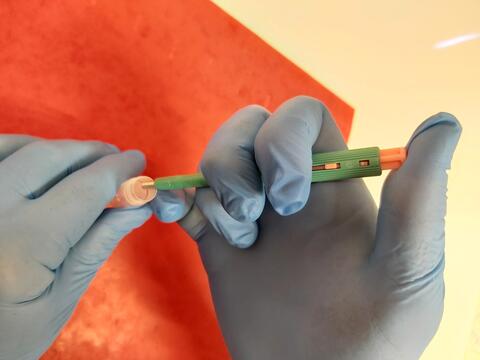Supporting fisheries management in the Pacific Islands with cutting edge genomic technologies
The field of genomics is rapidly expanding, especially in ways that are relevant to research on marine species and ecosystems. Offering a valuable approach to address the challenges facing sustainability in fisheries, genomic analyses bring new insights into:
- stock delineations - through statistically powerful datasets that enable us to test for complex population structure types that are realistic for marine species
- stock health and size - through assessments like close-kin mark-recapture
- biodiversity at the ecosystem scale - through the application of environmental DNA (eDNA)
In addition, species-specific genetic tests can be developed to check details such as an individual’s species, sex, origin, and even age, using just a few cubic millimetres of tissue. This kind of low-profile sampling sidesteps the need to use more invasive methods, which translates to either the ability to release a fish back into the water, or to avoid reducing the value of a fisherman’s catch at the market.

All of these elements are useful to tuna stock assessments (and managers of other fisheries) because they provide fisheries independent validation of parameters used in assessment models, such as growth, reproductivity, and population structure. They can also test for the concrete, molecular proof of patterns that we have previously only been able to observe indirectly. For example, tagging data demonstrates that individual tunas can travel thousands of kilometres, but doesn’t test if they reproduce—the basis for being a single stock—across that whole range. Genomic analyses can directly test for kinship between individuals and the rate of interbreeding between groups. Genomics also applies outside the tuna industry. Few fisheries-significant tropical species are as well researched as tuna, but it is increasingly easy to answer basic questions about population structure and individual biology using the genomic tools that have already been tested on tuna.
To facilitate the inclusion of these kinds of assessments into fisheries science in the Pacific, SPC FAME has expanded the laboratory in Noumea to include a section dedicated to cutting-edge genomics, including the only DNA sequencing capabilities in the South Pacific. Prior to this, any work requiring more in-depth processes than PCR (polymerase chain reaction) required outsourcing to commercial labs in Hawaii, the Pacific Rim, or beyond. Our laboratory conducts studies for all FAME topics and also provides services to other research groups in the region in need of DNA processing services at a bespoke project volume.
Our genomics work will evolve with the larger genomics field. New technologies and analyses are constantly being rolled out, often in creative and unexpected directions. We are committed to making the best and newest genomics applications available to fisheries managers of member countries, the Western and Central Pacific Fisheries Commission (WCPFC), and the larger community of Pacific-based researchers.
